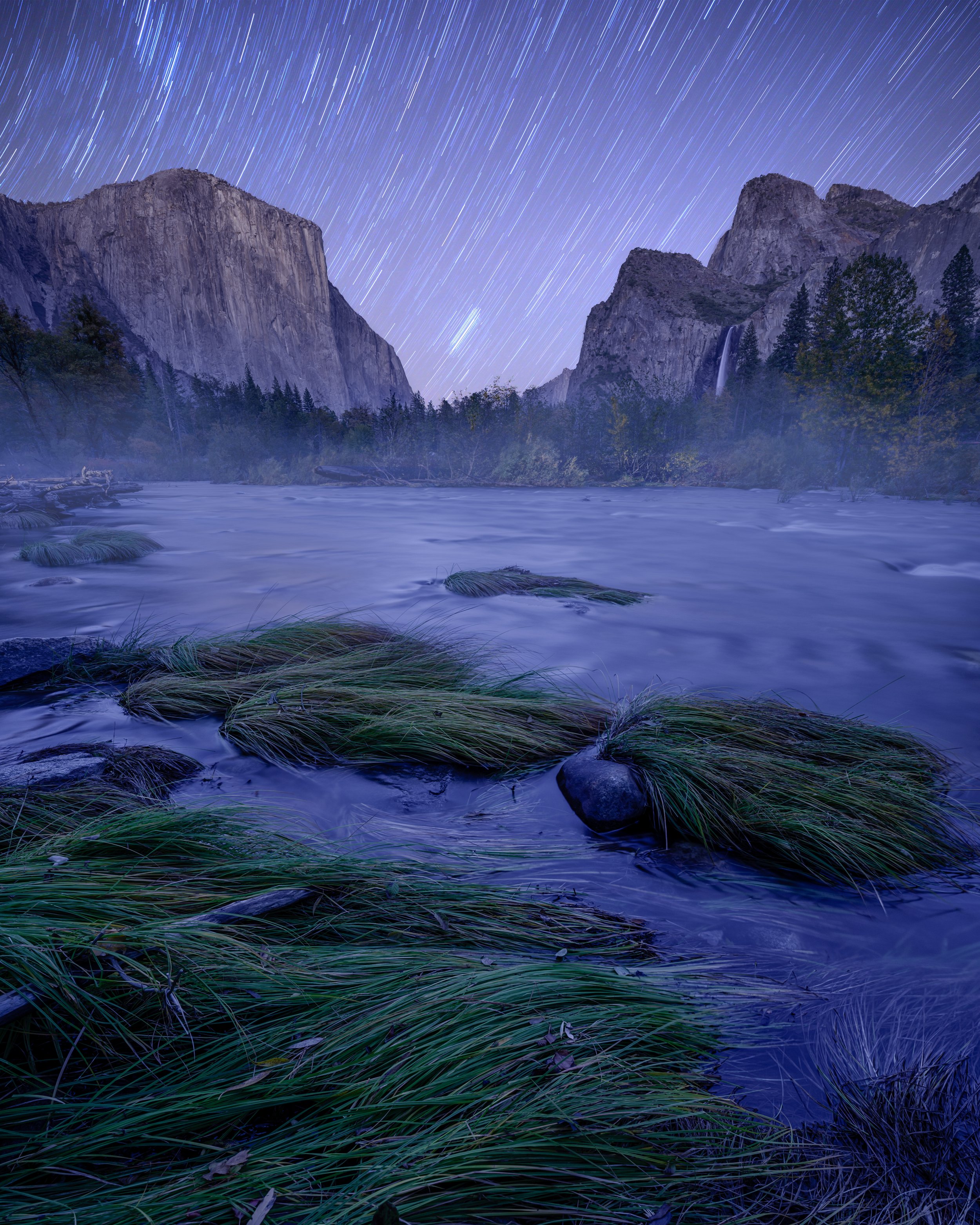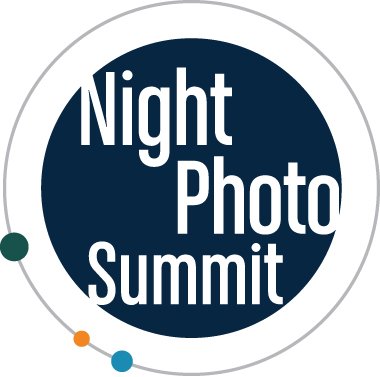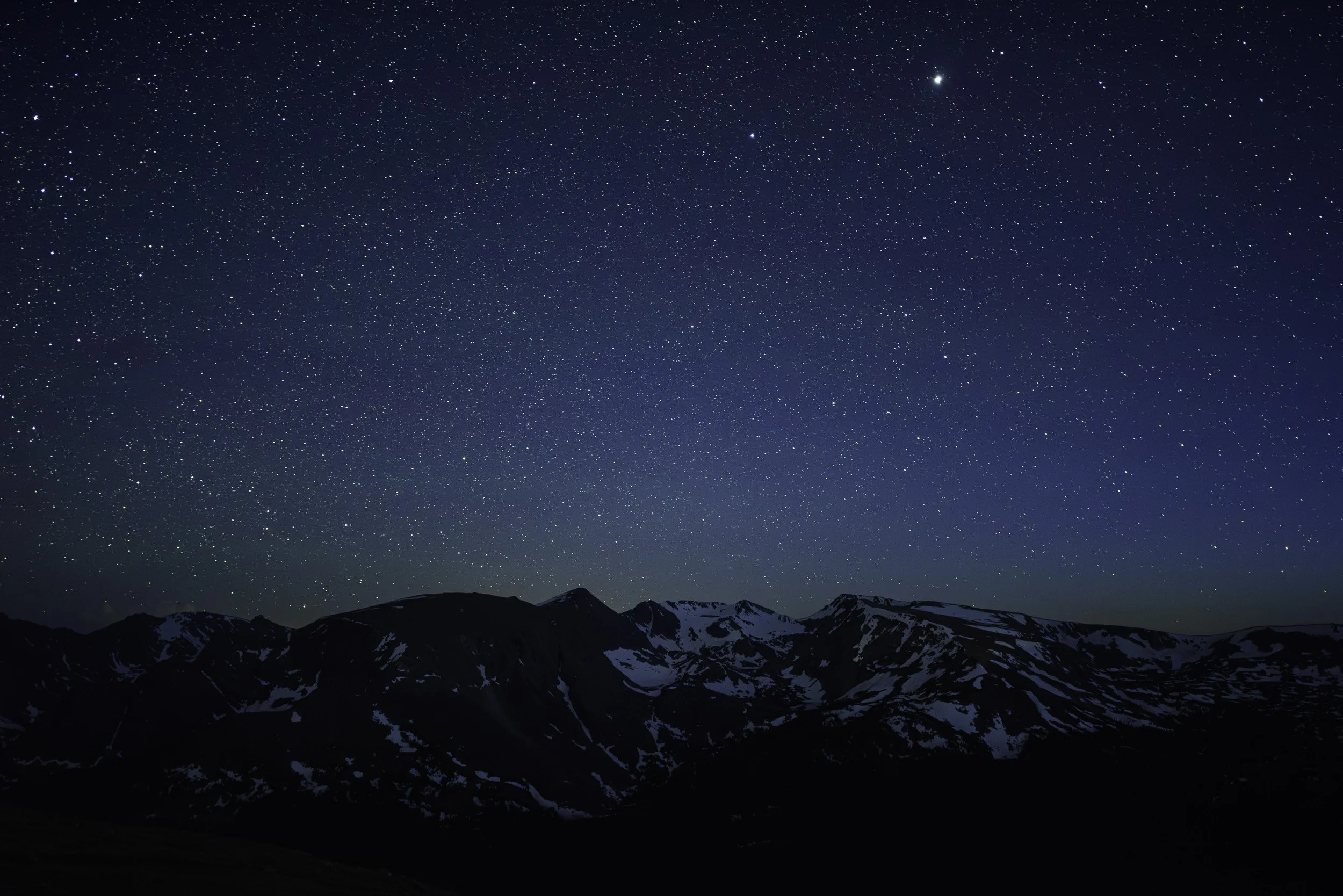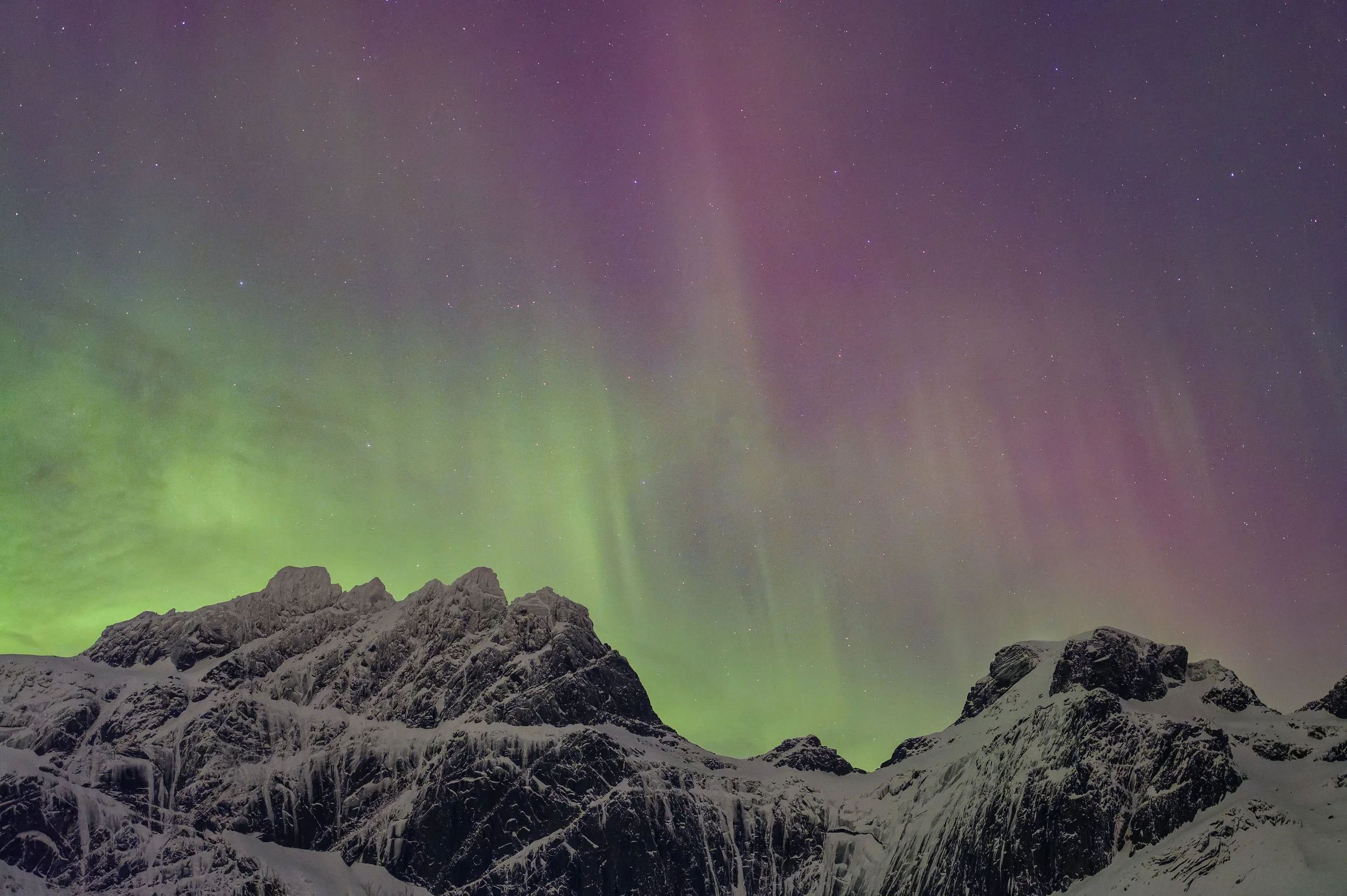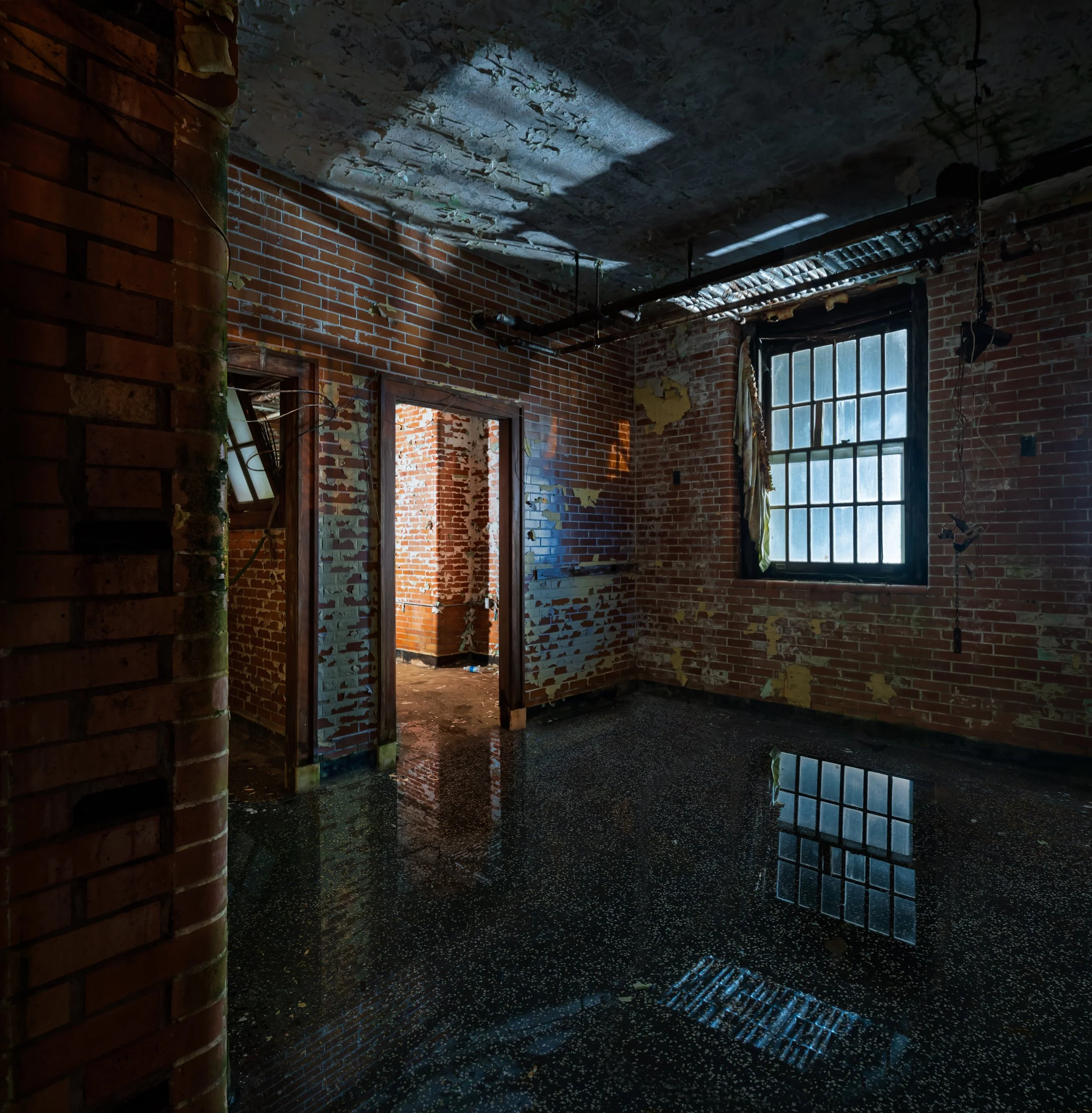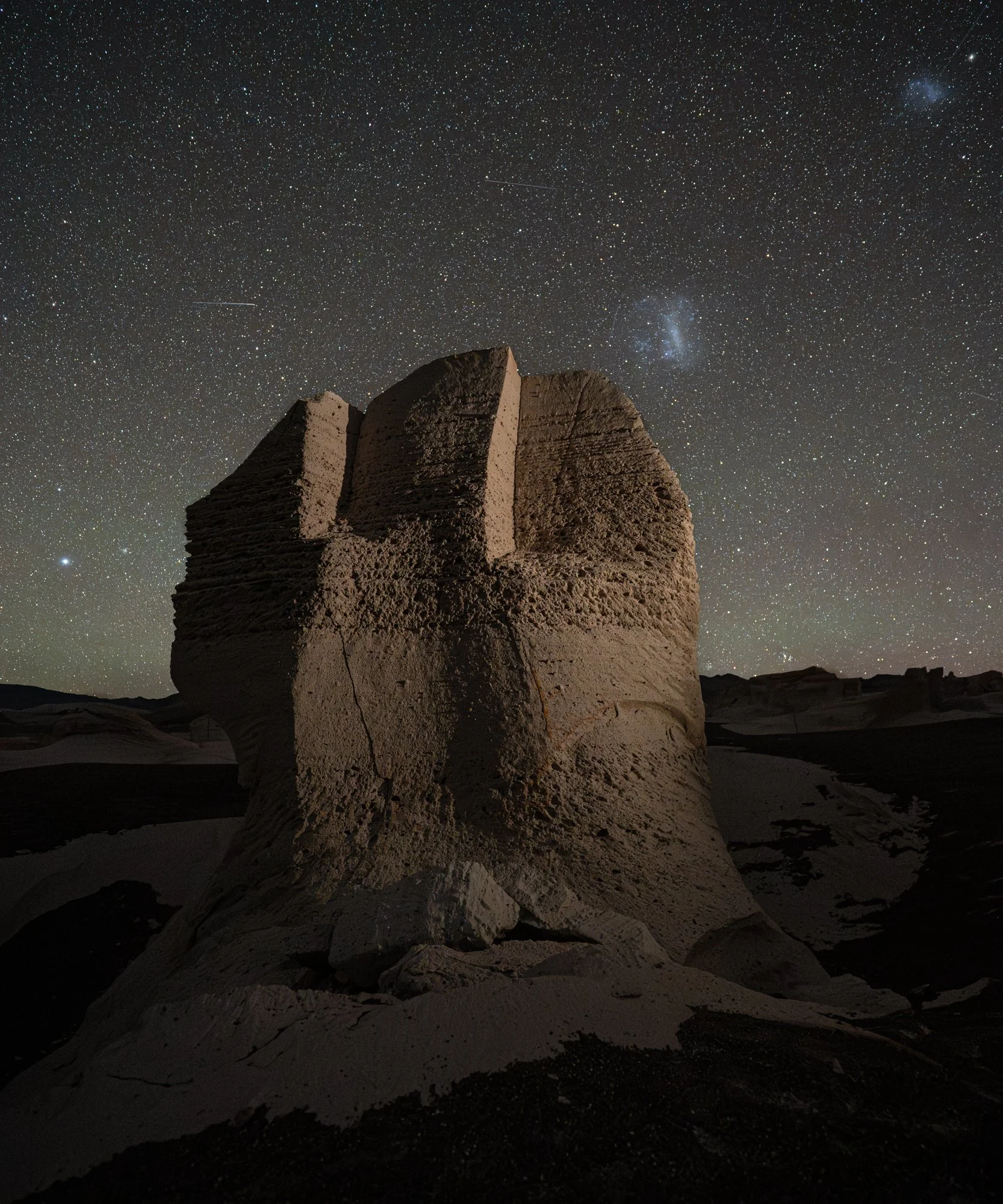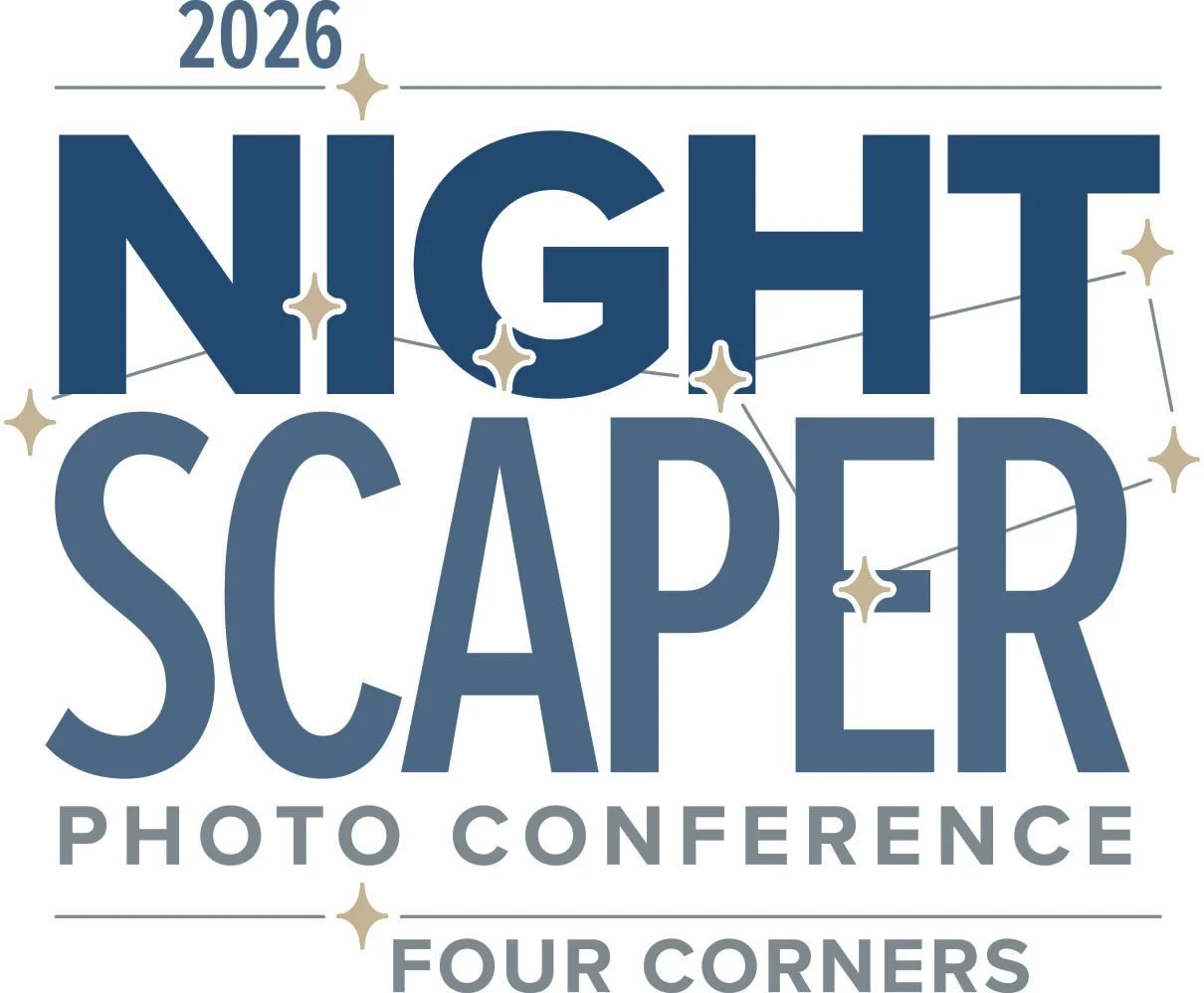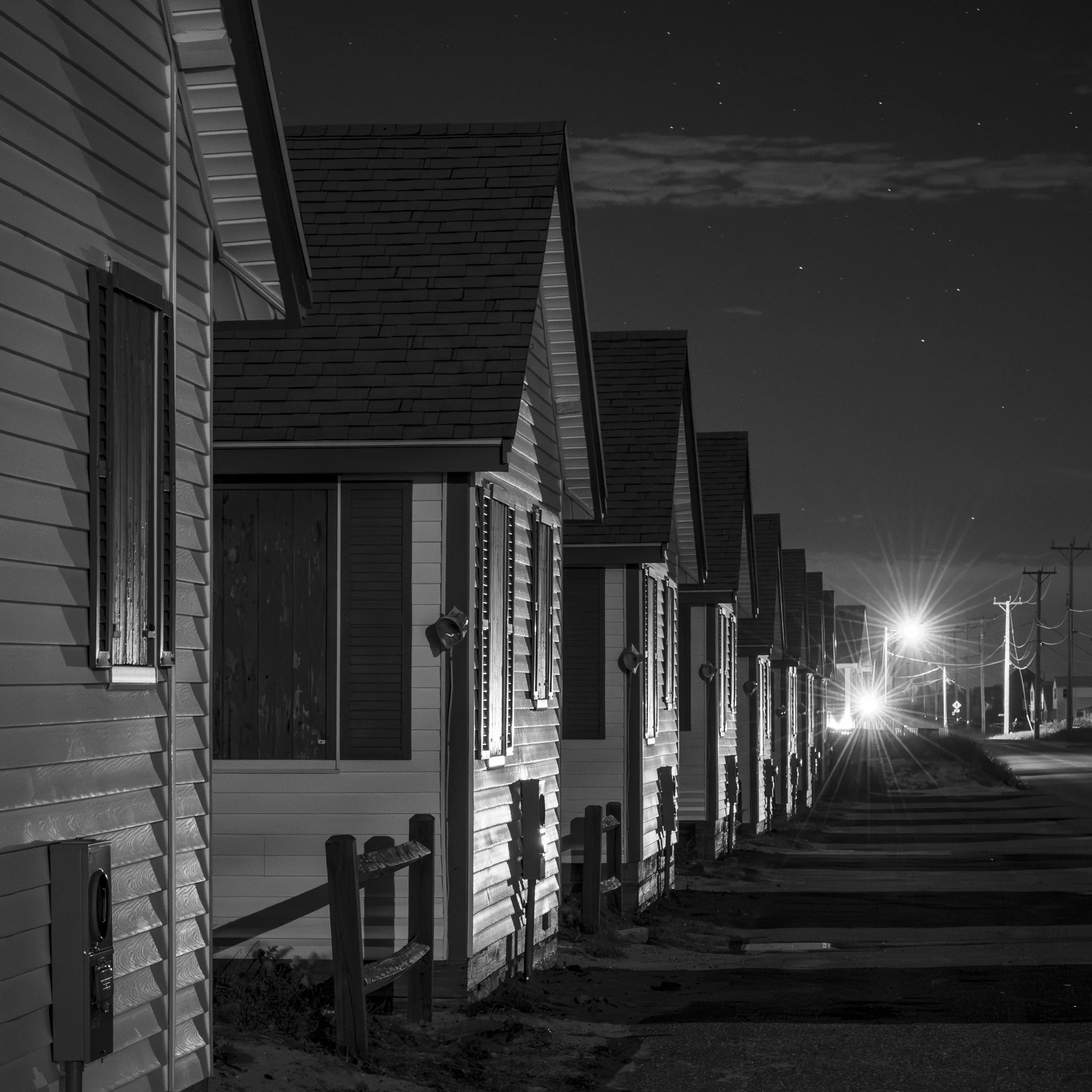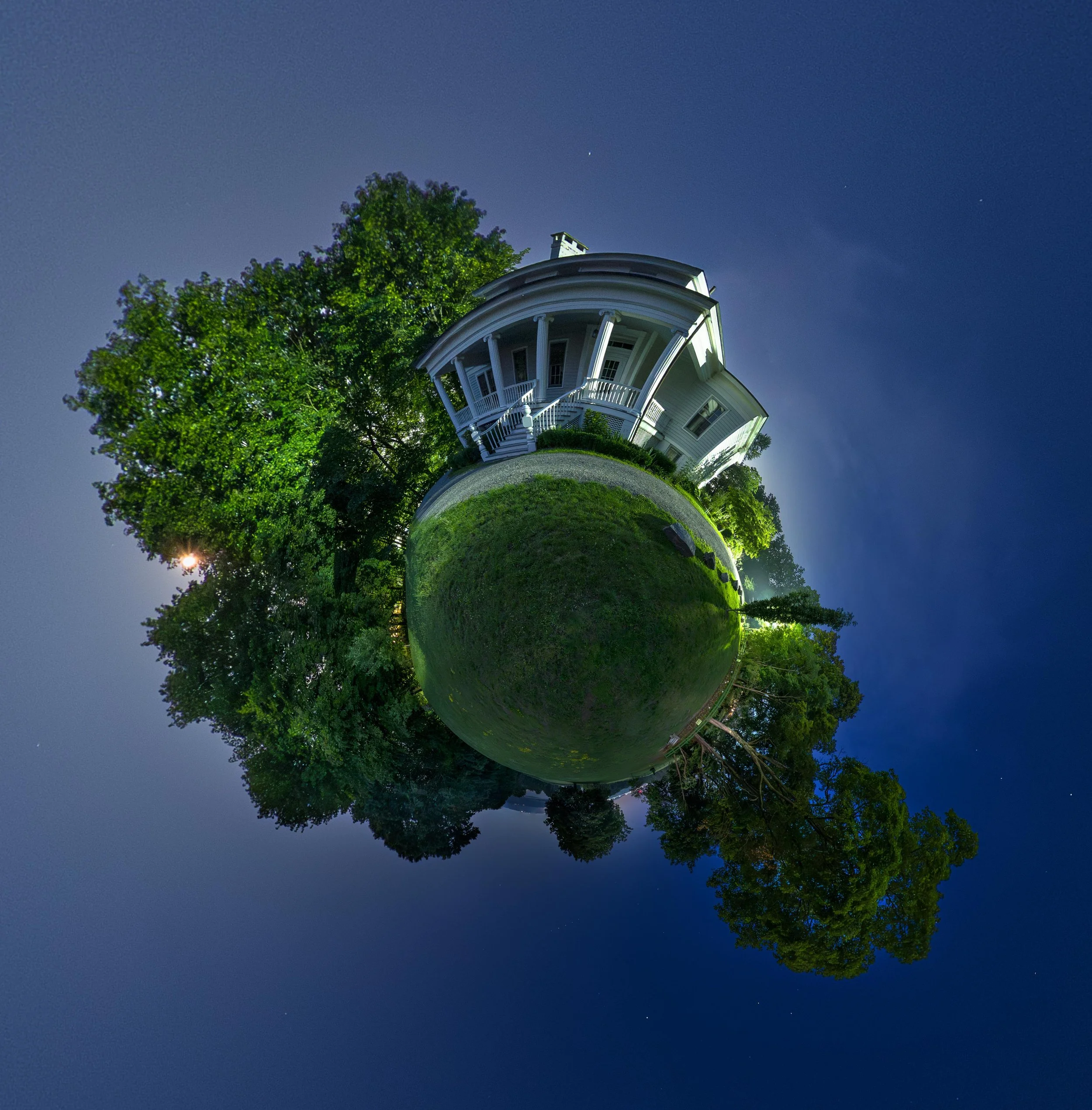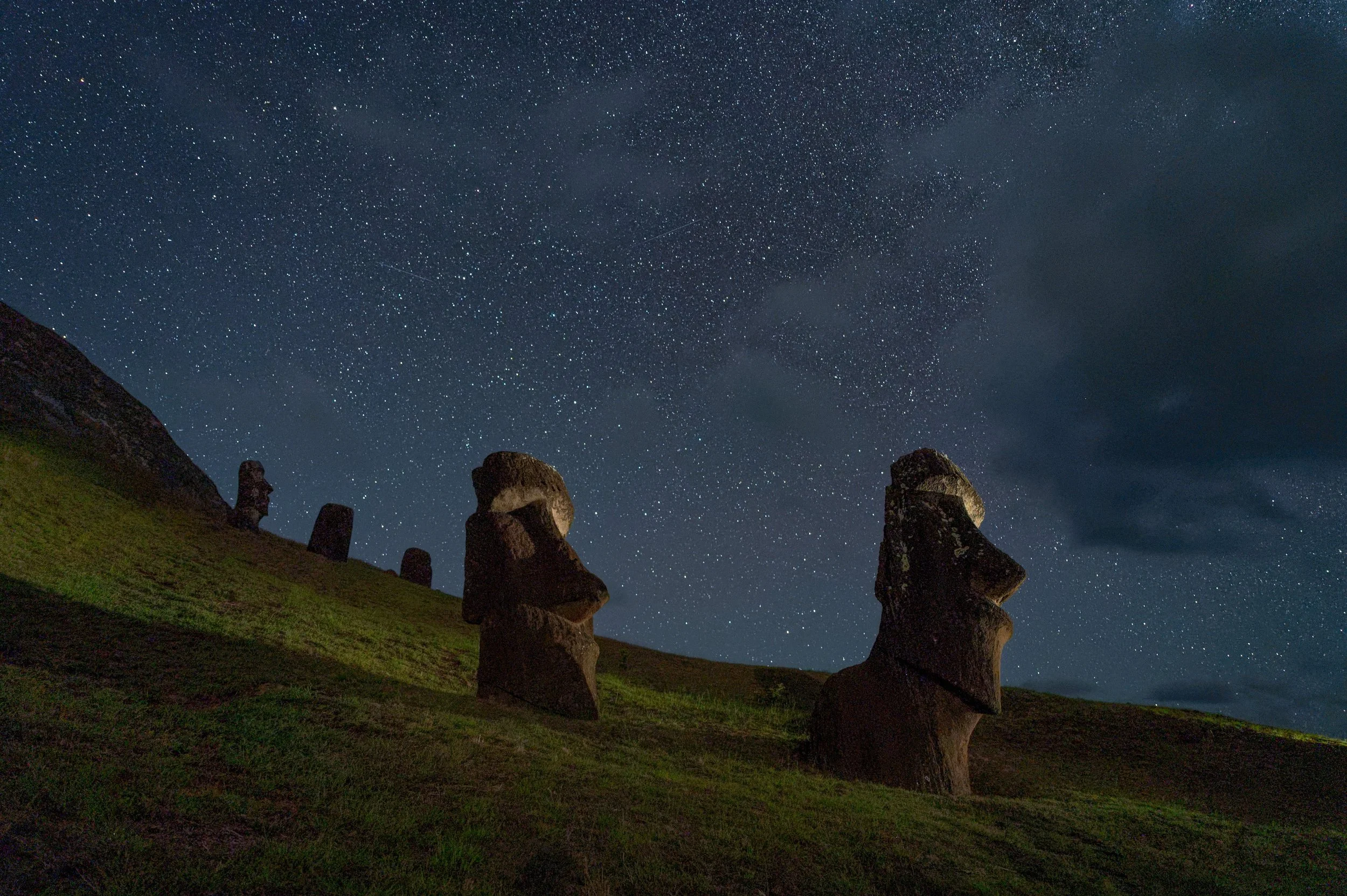2021 was a challenging year for all. But the overall themes that prevailed were hope and celebration, as many of us could finally rejoin the great outdoors with friends and family. At National Parks at Night, we were so thrilled to see our community in-person and to share sacred spaces under the stars.
Now, at the end of 2021, as in the past we look back on our year’s worth of images and note the ones that are most precious to us. Choosing your favorite photos can be a daunting project. What makes a 5-star image? Is it the technical work that went into creating it? Or the reminder of a very special night? Which photographs still continue to shine and what new gems have been uncovered?
As you read about each National Parks at Night instructor’s favorite two photographs of the year, the underlining theme is that each had the power to transport us back to that precise moment in time. The feelings that come rushing back can be a combination of everything that aligned to create the image. It transports us back and hopefully takes you on a similar journey.
Chris Nicholson
Stars Over Zumwalt Meadows, Kings Canyon National Park
Nikon D5 with a Nikon 14-24mm f/2.8 lens. Two blended exposures shot at 30 seconds, f/5.6, ISO 400 (foreground) and 20 seconds, f/2.8, ISO 8000 (sky).
When I was writing my book Photographing National Parks a few years back, I spent a lot of time in coffee shops in Queens, New York, where I lived at the time—as well as in coffee shops in my hometown in Connecticut and in other places I traveled—researching and writing about various places, including some I’d never been to. I recall writing about fantastical-sounding spots such as Cinder Cone in Lassen Volcanic National Park, and Grand View Point in Canyonlands, and Artist Point in North Cascades, and hoping that someday I’d get to visit them.
In the following years I was fortunate that my book carried me to these places and more. On multiple occasions I’ve stood gazing at grand vistas, thinking back to my days leaning over my laptop in some random Starbucks learning and writing about these places, and marveling at the journey that brought me to be there in person.
Another such place was Zumwalt Meadow in Kings Canyon National Park, which I wrote about sometime around 2013 and finally was able to visit in 2021. From my book: “Zumwalt Meadow is easy to hike to and around, and is pleasant to photograph, as well. The meadow sits on the valley floor, with lush greenery providing a softer aesthetic than found in most other areas of the park. The Kings River flows through the grasses, framed by the distinctive granite walls of Grand Sentinel and North Dome.”
Zumwalt sits near the end of the furthest mile of paved road in Kings Canyon. Lance and I ventured out there, scrambled about 30 feet up some talus, set up our tripods for a dusk foreground exposure, then waited under a peaceful, spectacular night sky for a starry background exposure.
For a long time I sat on a boulder, just watching this beautiful space on Earth roll into darkness, once again remembering where I’d been and feeling grateful for where I’d come.
Tuolumne River and Meadows, Yosemite National Park
Nikon D5 with an Irix 11mm f/4 lens. Two blended exposures shot at 4 minutes, f/4, ISO 2000 (foreground) and 25 seconds, f/4, ISO 8000 (sky).
My next favorite photo from 2021 is also a blue hour blend, which isn’t much of a coincidence because it’s a technique I deliberately tried to employ more during the year.
This time I was in Tuolumne Meadows in Yosemite National Park. It’s a beautiful location in the High Sierra region of the park—an area that for many visitors is practically ignored in favor of the oft-visited valley.
At 8,600 feet, Tuolumne is one of the highest-elevation meadows in the Sierra Nevada. The Tuolumne River quietly bisects the glacier-carved meadow, meandering among erratics and past scattered lodgepole and Jeffrey pines, supporting a teeming riparian ecosystem that’s practically an oasis in the beautiful yet rugged and vast sub-alpine landscape.
I was again with Lance, and we hiked into the meadow to a beautiful view of the Tuolumne River flowing toward the distant mountains. The moon was new, so I knew the landscape would be completely dark once twilight was over. Phrased another way, it was a perfect situation for a blue hour blend.
I set up my tripod and used the ultrawide Irix 11mm f/4 lens to fill the foreground with the river. I made a few exposures during dusk, then left the setup while heading off to shoot with a second camera for awhile. I came back once the stars were shining, and made several exposures over the course of an hour or so, capturing the Milky Way in different spots as it drifted along the horizon. I later composited two of the frames in Photoshop to create the final image.
Gabriel Biderman
Officer’s Row, Sandy Hook
Nikon Z 6 with a Nikon Z 24-70mm f/4 lens at 24mm. 30 seconds, f/11, ISO 1600.
My new year’s resolution for 2021 was a simple one: to get out more at night and photograph! I live in Brooklyn, New York, and spent most of 2020 indoors; I didn’t travel farther than my Vepsa could take me.
So in early January my wife and I decided to spend a weekend with a good friend of ours in New Jersey, right outside Sandy Hook. Part of Gateway National Recreation Area, Sandy Hook is a very popular spot in the warmer months, but in the winter when the temperature is below 20 F, not so much.
For the two nights I poked around with my camera, I was bundled up like an Arctic explorer. Everyone thought I was crazy for going out, but I would not be daunted. This was the first national park I had stepped into in over a year, and I was energized!
Officer’s Row is one of the most scenic spots at Sandy Hook, especially for the brilliant sunsets that light up the sky. I tried a variety of focal lengths, cropping in tight to one, three or five houses. It was nice, but almost too simple. I continued to move back to include more buildings and then I realized that the trees at the other end of the field stood in a row similar to the homes. By adding the trees, it created the perfect foreground to give a better sense of place. Officer’s Row is not just the homes they lived in, but the field where military folk played with their families.
It was a cold and lonely experience, but one that jump-started my 2021 relationship with national parks at night.
Reacquainted with the Night, Joshua Tree National Park
Sony a7S III with a Sony FE 12-24mm f/2.8 lens at 18mm. 13 seconds, f/2.8, ISO 6400.
I was thrilled to have my first road trip of the year be to a familiar and always inspirational place, Joshua Tree National Park. I was also excited to be sharing the experience with my good friend and co-teacher, Matt Hill. We both packed our kitchen sinks for what would end up being a 3-week road trip. Not only did I bring trackers, tripods and time-lapse devices, but I also borrowed every Sony A7 and A9 camera and most of their wide and fast glass.
Matt and I had 3 days to scout and enjoy the night skies as we prepared for an upcoming workshop. But with so much gear, I got stuck in “testing” mode and created very few images for myself.
After the workshop we stayed an extra night to team with Chris and Tim to record our OPTIC Imaging Conference presentation for B&H Photo. That was a long, focused night that required the four of us to play multiple roles from creative to producer and grip!
During a break in the filming Matt went to lay on one of Joshua Tree’s many boulders. He was exhausted and needed to re-energize by taking a few moments to be one with the stars.
I immediately took one of our Luxli Fiddle LED panels and boomed it up and over him. I love the spotlight effect that made it seem like Matt was bathing in the moonlight. For the camera, I chose a low angle to create a new horizon line that makes it seem like Matt is floating on a wave of rocks.
This could be one of my favorite night portraits I have ever made, because to me Matt is experiencing something I have done and that we all need to remember: Take a break under the stars and get reacquainted with the night.
Lance Keimig
Julie at Bass Harbor
Nikon D780 with a Tamron 15-30mm f/2.8 lens at 29mm. Six composited frames exposed at a range of 2 to 30 seconds, f/5.6, ISO 100.
This image was made more or less as a grab shot as the last twilight was fading at Bass Harbor, Maine, during our PhotoPills workshop in Acadia National Park.
We had arrived just as the light was fading, and by the time the group dispersed and got to work, it was too late to get it all in one exposure. Not to be deterred, I did a six-frame bracket at 1-stop intervals. I was struck by the scene, and even in the fading twilight the light was gorgeous. Our workshop participant Julie had set up on the pier, and at first I was bummed that she was in my frame, but in the end I think that she adds to the image.
I’m attracted to the cool blue colors punctuated with one sodium vapor streetlight and a few warm lights in the houses, plus the stillness and the simple architectural shape of the shack on the pier. Julie adds another element, and marks the context for my memory.
To me, it’s a great example of how a photograph has the power to transport me to a different place and time. As I sit here typing on a cold December evening in Vermont, I’m taken back to coastal Maine in the height of summer, and all of the places spent over the course of a week with a fine group of people making images. It’s personal, and I like that. The viewer will make whatever they want or nothing at all of the image, but for me it is a place-keeper for a boatload of memories.
Tanguy Key
Nikon D750 with a Nikon 28mm PC f/3.5 lens. 15 seconds, f/5.6, ISO 6400.
After completing our Everglades National Park workshop in April, Chris and I took a couple of days to explore the Florida Keys. I am so out of my element in Florida. Culturally, geographically, meteorologically, Florida is just not in my wheelhouse. I admit, after a long New England winter it was nice to be wearing shorts and a Hawaiian shirt while those at home were still wearing down jackets, but still …
The drive from the Everglades into the Middle Keys took longer than we had anticipated, and longer than Google had promised, and the night-photo opps visible from the main drag were few and far between. I didn’t mind; I was just along for the ride and happy to experience this strange new environment.
This image was made at the foot of one of the causeways that connects the keys, where the setting comprised a vast expanse of sea and sky punctuated with sticks and stones and various synthetic detritus. The tropical colors and minimalist landscape reminded me of the French surrealist painter Yves Tanguy, and I made several compositions that night in his honor that had a similar feel.
I’m smitten with this composition—the repeating shapes of the stones, the sticks, the horizon and the wires, and the graduated turquoise hues of water fading into sky all work together to make this one of my surprise greatest hits of 2021.
Matt Hill
White Pocket
Nikon Z 6 with an Irix Cine 11mm T4.3 lens, lit with a Luxli Fiddle. Eleven frames shot at 20 seconds, T4.3, ISO 12800, stitched in PTGui and post-processed in Lightroom.
Until this year, one of my bucket list experiences was an overnight at White Pocket in the Vermillion Cliffs National Monument of northern Arizona. Boy am I lucky to have scratched this one off the list!
This location is on BLM land, and you can camp there overnight without a permit. If planning a visit, always check ahead of time, as it’s a major commitment to drive out there (in deep, deep sand). You might also consider hiring a local guide, like we did. They provided camp gear and food, and we drove ourselves in a high-clearance vehicle.
All disclaimers aside, this area is precious, wild, remote and located in dark, dark skies. Being there seems like being on the surface of another planet. The various colors and textures of rock are mesmerizing, and a joy to light paint.
I had been imagining this pano for years. Ever since my first daytime-only visit I’d been wanting to photograph the Vortex and Castle Rock paired with a low Milky Way.
When the chance finally came, I was with Gabe and we interpreted this scene in different ways. But we both had our tripod legs on the precipice of the Vortex, which dips down much more precariously than this image suggests.
The final pano is a PTGui blend of 11 images made from an ultrawide 11mm Irix Cine lens, in vertical orientation. As usual, I aggressively overlapped the images for a seamless stitch. I shot at ISO 12,800 to balance out the native T4.3 maximum aperture. And each 20-second exposure was halfway between Accurate and Default NPF exposure durations for crispy star points.
Lighting the monumental landform was tricky. I used a Luxli Fiddle to bounce light off the stone wall behind us—literally the only option as my angle of view exceeded 200 degrees.
This now hangs on my wall as a 72-inch Xposer print.
Bethesda Fountain, Central Park
Nikon Z 6II with a Nikon Z 24-70mm f/2.8 S lens at 34mm, lit with two Coast HP7R flashlights. 60 seconds, f/6.3, ISO 100.
During our New York City workshop with Gabe, it felt great to get back to my roots. Gabe and I had met and fostered our friendship over night photography in NYC, so returning to the noise and a cacophony of light sources was quite satisfying.
Bethesda Fountain is an icon within the world-famous Central Park. This was not my first time shooting here, but it was certainly the best lighting I’ve ever had. And that was due to teamwork!
Gabe and I placed our flashlights on the fountain’s edge to add sparkle to the gilded statuary. The light also filled in the dark areas in the water and under the body of the fountain. We placed the first light slightly left of camera, the second perpendicular and to the right. The result is, for me, a strong example of well-defined portrait lighting.
Of particular challenge was defining the falling water. The camera did capture all the info I needed, but some post-processing magic in Lightroom was required to render this version. Applying a Select Subject mask allowed me to control the highlights and contrast in the water. I added a Select Sky mask to darken the sky, and increased contrast. Finally, I darkened the bright clouds low to the horizon with a brush mask and emphasized the paths of the water cascading down to the final raised pool.
What you don’t see was the most “New York Moment” of all: the half-naked man collecting change from the bottom of the fountain during this exposure. Ah, New York, how I love you.
Tim Cooper
Desert Light, Joshua Tree National Park
Nikon Z 6II with a Nikon Z 12-24mm f/2.8 lens at 24mm. Multiple blended exposures of 30 seconds, f/8, ISO 1600 (foreground) and 15 minutes, f/8, ISO 100 (sky).
With its amazing array of rock formations, desert flora and pure night skies, Joshua Tree National Park is a night photographer's paradise. I was fortunate enough to be there for the near simultaneous events of our PhotoPills workshop and our video production for B&H’s OPTIC Imaging conference.
While scouting, Chris showed me this narrow defile near Skull Rock and I knew it was not only a great spot for our PhotoPills workshop but also a perfect spot for me to do a light painting demo for the conference. The shoot was, however, going to be a challenge.
When first entering the narrow gorge I saw the desert scrub plant wedged between the rounded rocks and knew I wanted to backlight the plant so it would anchor the foreground and highlight the texture in the rock formations.
The first problem was that there was no way one exposure would give me enough time to light paint the foreground and the background. The second problem was that I was so close to foreground rocks that even an aperture of f/16 would not provide perfect sharpness throughout the scene. So I decided to break up the scene into several exposures.
On the first exposure I focused on the foreground rocks and painted from behind to bring out the texture and to backlight the scrub plant. On the second exposure I refocused on the middle ground and walked through the scene while illuminating the walls of the gorge. The light on the far peak was supplied by passing cars.
After many practice runs and several failed attempts I was finally able to light the entire scene as I’d imagined it. For the final exposure I focused on the sky to create the trailing stars.
While the bulk of time creating this image occurred in the field, I also spent a significant amount of time post-processing. The same scene taken with different focus points results in small changes to the size of the subjects within the scene. This means that I had to resize each frame in Photoshop so that all of the rocks were the same size in the final image. Then each frame had to be blended together to create the illusion of continuous lighting. The easiest part was blending the star trails with the foreground.
While many night images can be made with a single exposure, sometimes it's easy to envision a shot that requires a lot more work. I’m glad I took on this particular challenge as it turned out to be one of my favorite images of 2021.
Star Trails, Valley View, Yosemite National Park
Nikon Z 6II with a Nikon Z 12-24mm f/2.8 lens at 14mm. Foreground: three focus-stacked blue-hour images shot at 15 seconds, f/5, ISO 100. Sky: three exposures shot at 5 minutes, f/3.5, ISO 500.
Of the millions of photographs made in Yosemite National Park, some of my favorites are from the Valley View pull-off. The ever-changing volume of the Merced River revealing, hiding and reshaping the river's edge directly below the parking area has been fodder for an abundance of magical photographs. I was determined to add to that collection, hoping for an image that captured this view with the stars of the night sky.
My chance finally came in October when Matt and I led a group of night photographers for a workshop in Yosemite Valley. During our initial scout I was disappointed to find that the river had become so low from California's ongoing drought that this particular vantage point left much to be desired.
As luck would have it, our group experienced the break in California’s dry spell to a tune of over 6 inches of rain in less than 2 days. The aftermath of the rainfall was truly magical as all of the waterfalls were rejuvenated and the rivers sprung back to life.
After shuffling the schedule around a bit due to the rain, we were able to venture to the Valley View pull-off to begin a night of shooting. The swollen river produced a far more interesting foreground as it created new channels and connected the recently dried grass tussocks with the flow of the water.
Setting up near several of the workshop participants, we worked through the blue hour exposures (with focus stacking to accommodate the extreme depth of the scene) and waited for astronomical twilight to end.
Simply waiting and watching as the glow faded from the mountains was worth the whole excursion. After the show of color ended and we counted the lights of the climbers making camp on the vertical cliffs, darkness finally fell and we began our sky exposures. I chose to create star trails via a stack of three 5-minute exposures in the hopes of creating motion in the sky that would echo that of the river and that implied a mirror of the motion of the foreground grasses.
Your Turn
What was your favorite night photograph of 2021? We’d love to see it! Share in the comments below, or on our Facebook page, or on Instagram (tag us @nationalparksatnight #nationalparksatnight #seizethenight). Be sure to tell a story too—the technical aspects, the challenge overcome, or a tale of the experience.
Then … have a Happy New Year!

